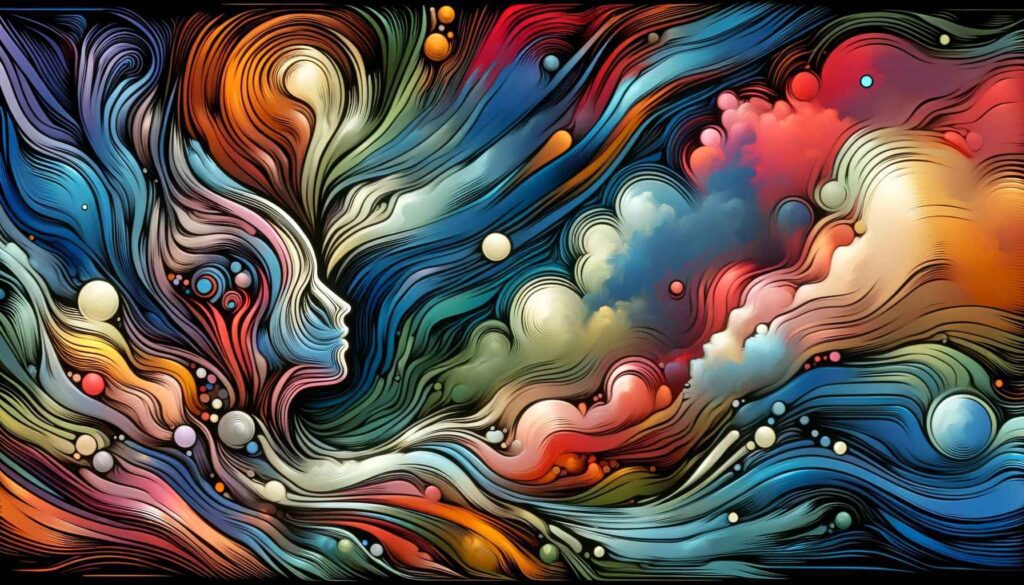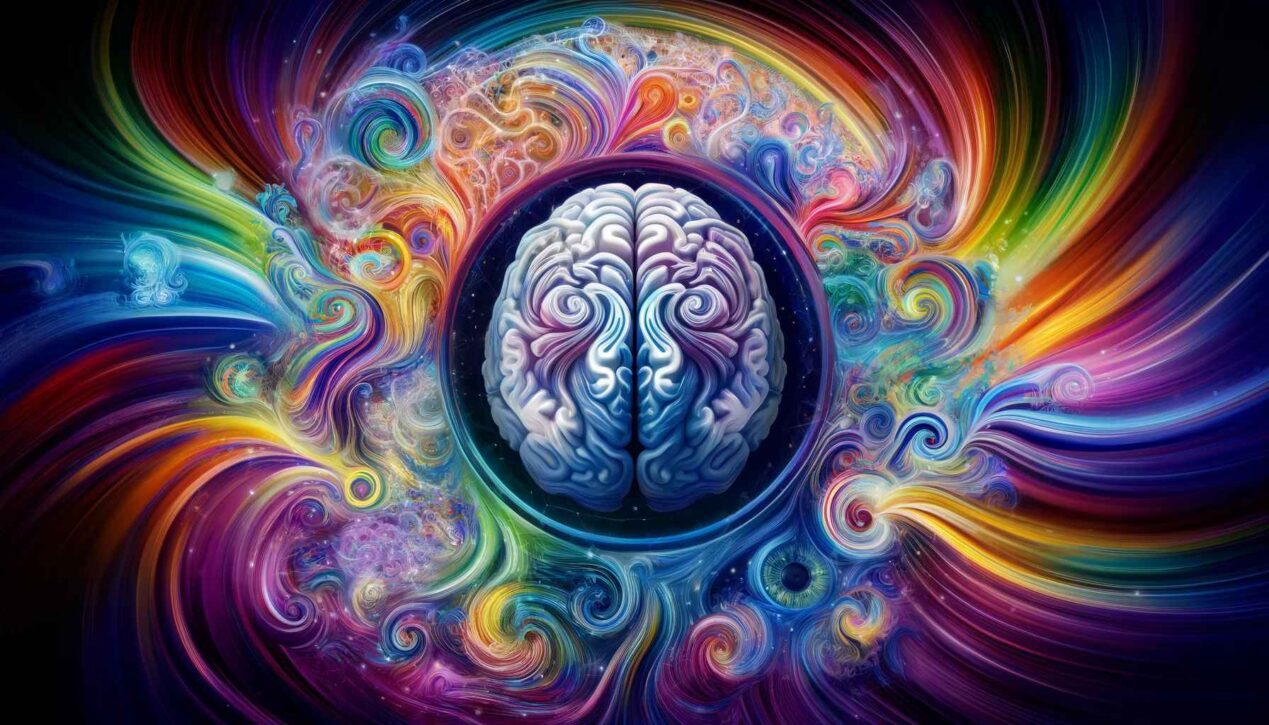DMT Harm Reduction: DMT, or N,N-Dimethyltryptamine, is a potent psychedelic compound of the tryptamine family. Its molecular structure shares similarities with the neurotransmitter serotonin and the psychoactive substance psilocybin. DMT occurs naturally in many plant species and can also be synthesized in a laboratory.
- Natural Sources: DMT is found in several plants and trees native to South America, West Indies, and parts of Asia. It is most famously derived from the Psychotria viridis shrub and Banisteriopsis caapi vine, which are used to brew ayahuasca, a traditional spiritual medicine among indigenous tribes of the Amazon.
- Synthetic Forms: Synthetic DMT is produced in laboratories and is known for its remarkable efficiency in onset and intensity. It is typically consumed as a crystalline powder, often vaporized or smoked for rapid psychedelic experiences.
DMT is categorized as a psychedelic due to its ability to produce profound changes in perception, mood, and thought when ingested. It is known for inducing intense visual and auditory hallucinations, altered states of consciousness, and mystical experiences. These effects are believed to result from DMT’s binding affinity to serotonin receptors in the brain.
How DMT Affects the Brain

DMT primarily exerts its psychedelic effects through interaction with serotonin (5-HT) receptors in the brain, notably the 5-HT2A receptor. Serotonin is a key neurotransmitter involved in regulating mood, perception, and cognition. When DMT binds to these receptors, it significantly alters normal neurotransmission, leading to profound changes in consciousness and perception. This mechanism is similar to other serotonergic psychedelics like LSD and psilocybin.
The binding of DMT to these receptors can cause a cascade of changes in various neural circuits, potentially affecting areas of the brain involved in emotion and perception, such as the prefrontal cortex, occipital lobe, and temporal lobe. These effects contribute to the intense sensory and emotional experiences reported by users.
Recent research into how DMT affects the brain offers intriguing insights, particularly through the use of advanced neuroimaging techniques. A 2023 study conducted by Imperial College London, utilized a combination of electroencephalography (EEG) and functional magnetic resonance imaging (fMRI) to observe brain activity in volunteers who were administered DMT intravenously.
The findings revealed that DMT leads to significant changes in brain function, particularly increasing connectivity across various brain regions. This heightened connectivity is thought to contribute to the intense and immersive experiences reported by users, which can include vivid visions and a sensation of entering different realities or dimensions. The research showed that these effects are particularly pronounced in brain areas associated with high-level cognitive functions like imagination.
Additionally, the study highlighted how DMT disrupts the normal functioning of brain systems that are involved in modeling or predicting environmental stimuli. This disruption results in a highly dysregulated state, contributing to the drug’s powerful psychedelic effects. Interestingly, DMT’s impact on the brain is relatively short-lived compared to other psychedelics.
Psychoactive Effects: The Typical DMT Experience
- Visual and Auditory Hallucinations: Users of DMT report intense visual hallucinations that often include intricate geometric patterns, vivid colors, and encounters with seemingly autonomous entities or environments. These visual effects are typically more pronounced when the eyes are closed.
- Auditory Effects: Auditory hallucinations can include hearing sounds described as buzzing, ringing, or the presence of voices. These sounds may seem to originate from within the user’s mind or appear as external and real.
- Altered Perception of Time and Space: DMT significantly alters one’s perception of time and space. Users often report that time seems to slow down drastically or become irrelevant. Spatial dimensions may become distorted, with environments either stretching infinitely or compressing.
- Emotional Shifts: The emotional response to DMT can be deeply profound and varies widely among individuals. Users often report a range of emotions from overwhelming joy and euphoria to intense fear or anxiety. Experiences can also be accompanied by a sense of detachment from the self, often referred to as ego dissolution, leading to profound mystical or spiritual feelings.
Duration of Effects: Depending on the Mode of Ingestion
- Ingested as Part of Ayahuasca: When ingested as part of ayahuasca, the onset of effects is much slower, usually taking between 30 to 60 minutes to begin. The psychoactive experience can last significantly longer, typically between 2 to 6 hours. This mode of ingestion involves a combination of DMT-containing plants and other ingredients that inhibit the breakdown of DMT in the digestive system, allowing it to affect the brain for a longer duration.
- Smoked/Vaporized: When smoked or vaporized, DMT produces a rapid onset of effects, typically within 30 to 45 seconds. The experience peaks almost immediately and diminishes just as quickly, with the entire experience lasting anywhere from 5 to 15 minutes. This method is known for its intense and fleeting nature.
- Intravenous: When DMT is administered intravenously, the duration of its effects can be quite brief, but the onset is almost immediate. This method of administration is less common than smoking or consuming as part of ayahuasca, and is more likely to be used in clinical research settings rather than recreational use. The effects of intravenously administered DMT begin almost immediately—within a few seconds. The peak effects are typically reached within the first few minutes. The total duration of the effects when DMT is administered intravenously is usually between 10 to 30 minutes. This short duration is similar to that of smoked DMT but can vary slightly depending on the dosage and individual metabolic factors.
These variations in the mode of ingestion affect not only the duration but also the intensity and nature of the DMT experience, making setting and preparation even more crucial for those choosing to partake in DMT consumption.
I will not dwell on other methods of use because of their experimentation and lack of clear data.
Risks Associated with DMT Use

Physical Risks Associated with DMT Use
- Increased Heart Rate and Blood Pressure: DMT can cause significant increases in heart rate and blood pressure, which may pose risks particularly for individuals with pre-existing heart conditions. The rapid onset of these effects, especially when DMT is smoked or vaporized, can be alarming and physically stressful.
- Coordination Issues: Users may experience motor function impairment while under the influence of DMT, making it dangerous to engage in activities like driving, operating machinery, or any tasks that require precise coordination.
- Nausea: Especially common when DMT is consumed as part of an ayahuasca brew, nausea and vomiting can occur, which while generally not dangerous, can be uncomfortable and distressing to the user.
- Pupil Dilation: DMT use often leads to marked dilation of the pupils, which can result in heightened sensitivity to light. This is a direct result of DMT’s stimulation of serotonin receptors that affect various autonomic functions.
Psychological Risks
- Intense, Sometimes Disturbing Hallucinations: The visual and auditory hallucinations induced by DMT can be intense and sometimes frightening. Users may encounter challenging visions or scenarios, including interactions with seemingly autonomous entities or confrontations with unsettling aspects of the self.
- Paranoia: The intense nature of DMT experiences can sometimes induce feelings of paranoia during and after use. This can manifest as an irrational feeling of being threatened or watched, which can be distressing.
- Long-term Mental Health Impacts: There is potential for long-term psychological effects from DMT use, particularly for those with pre-existing mental health conditions. These might include persistent alterations in perception or thought processes, and in rare cases, conditions such as Hallucinogen Persisting Perception Disorder (HPPD) where users continue to experience visual disturbances and flashbacks long after using the substance.
Legal and Social Risks
- Legal Consequences: DMT is classified as a Schedule I substance in the United States and similarly controlled in many other countries, making its possession, use, and distribution illegal. This can lead to significant legal consequences including fines and imprisonment.
- Social Stigma: Due to its legal status and the general public’s unfamiliarity with psychedelic substances, users of DMT may face social stigma. This can impact various aspects of life, including personal relationships and professional opportunities.
- Impact on Personal Relationships: The profound experiences induced by DMT can alter a person’s worldview or personality, which can strain personal relationships, especially with those who may not understand or accept the use of psychedelics.
Addressing these risks requires a nuanced understanding of both the substance and the individual user’s physical and mental health, legal context, and social environment. Harm reduction strategies become crucial in mitigating these risks, emphasizing the importance of safe, informed, and responsible use.
DMT Harm Reduction Strategies

Harm reduction is essential to minimize the risks associated with the use of DMT. Here are some specific strategies:
Education and Awareness
- Understanding the Substance and Its Effects: Educating potential users about DMT’s effects, both positive and negative, helps prepare them for the experience. This includes understanding the drug’s pharmacology, its impact on the brain, and typical physical and psychological effects.
- Importance of Context. Setting and Mindset Prior to Use: The set (mindset) and setting (environment) in which DMT is used critically influence the experience. A positive mindset and a safe, quiet, and comfortable environment can help mitigate the risk of negative experiences. Users should be in a stable mental state and prepared for the intensity of the experience.
Safety Measures
- Never Using Alone: Always have a sober, experienced sitter or guide present who can provide reassurance and manage any difficulties that arise during the experience.
- Testing the Substance: Utilize reagent testing kits to confirm the substance is DMT and to check for the presence of any potential adulterants. This reduces the risk of consuming unknown or harmful substances.
Proper Environment
- Choosing a Safe, Comfortable, and Secure Environment: The physical environment should be familiar, comfortable, and free from hazards. This minimizes the risk of injury and reduces external stressors that could negatively impact the experience.
- Importance of Mental Preparation and Supportive Individuals: Being mentally prepared for a potentially intense experience is crucial. The presence of supportive, trustworthy people can provide emotional security and comfort.
Dosage Control
Oral | Ingested | Smoked | Intravenous |
| ⚪ Light | 10 – 20 mg | 4 – 10 mg Alternative: 0.1 mg/kg | |
| 🟡 Medium | 30 – 150 mg High individual variations | 20 – 40 mg | 10 – 15 mg Alternative: 0.2 mg/kg |
| 🔴 Severe | 40 mg + | 15 mg + Alternative: 0.3 mg/kg |
- Understanding Dosage Variations: Familiarity with how different doses can affect the experience is important. Lower doses can offer a gentle introduction to DMT’s effects, while higher doses can be overwhelming and should be approached with caution.
- Recognizing Personal Limits: Users should be aware of their own physical and psychological limits. It’s crucial to start with lower doses, especially for those new to DMT, and only consider higher doses once they are more experienced and understand how they react to the substance.
Medical Considerations
- Avoiding DMT if There Are Underlying Health Conditions: Individuals with mental health disorders (such as schizophrenia or severe anxiety), or those with cardiovascular issues, should avoid DMT as it can exacerbate these conditions.
- Discussion of Potential Interactions With Other Medications or Substances: DMT can interact with a range of medications, particularly psychiatric medications, and other substances. These interactions can alter the effects of DMT and increase the risk of adverse outcomes.
Implementing these harm reduction strategies can significantly reduce the risks associated with DMT use, making the experience safer and more controlled. Education, preparedness, and caution are key components of a responsible approach to using psychedelic substances like DMT.
DMT Legal Considerations

DMT is classified differently across various jurisdictions, reflecting a range of legal approaches to its control:
- United States: DMT is classified as a Schedule I controlled substance under the Controlled Substances Act, which denotes that it has a high potential for abuse, no currently accepted medical use in treatment in the U.S., and a lack of accepted safety for use under medical supervision.
- Canada: Similar to the U.S., DMT is classified as a Schedule III drug under the Controlled Drugs and Substances Act, making its manufacture, possession, and distribution without a license illegal.
- United Kingdom: DMT is a Class A drug under the Misuse of Drugs Act, placing it in the same category as heroin and cocaine, with severe penalties for possession, supply, and production.
- Australia: DMT is considered a Schedule 9 prohibited substance according to the Standard for the Uniform Scheduling of Medicines and Poisons (SUSMP), indicating it is illegal to manufacture, possess, sell or use.
- Brazil: The use of DMT within the ayahuasca brew is legal for religious and cultural purposes. However, the isolated substance remains controlled.
- Netherlands: Unlike many other countries, the Netherlands classifies ayahuasca (which contains DMT) as illegal, though the enforcement can vary, and the raw plants used to make the brew are not controlled.
Tips for Understanding Local Laws and Regulations
- Research Local Laws: Before considering the use of DMT, it’s crucial to research the specific drug laws applicable in your jurisdiction. This can typically be found on government websites or through legal resources.
- Be Cautious with Information: Be mindful of where and how you discuss DMT use, as even online discussions can sometimes be monitored by authorities.
- Consider the Context: Understand that laws can also differ based on the context of use—such as religious ceremonies versus recreational use—and the form of DMT (e.g., synthetic DMT versus ayahuasca).
- Stay Updated: Drug laws can change, sometimes rapidly, as perceptions of drug use evolve. Staying informed through reliable news sources or drug policy organizations can help you remain compliant with local regulations.
- Consult Legal Experts: If in doubt, consult a legal expert who specializes in drug law. This is particularly important for those traveling or importing substances like ayahuasca for personal use.
Understanding the legal landscape regarding DMT is crucial for ensuring personal safety and legal compliance. Always approach the use of controlled substances with caution and respect for local laws and customs.
DMT Post-Use Care

Integration of the DMT Experience
Importance of Discussing and Processing the Experience: Integration is a key process in the aftermath of a DMT experience, especially due to its intense and often transformative nature. This process involves making sense of and incorporating the insights and emotions from the trip into one’s daily life, which can lead to personal growth and understanding. Discussing the experience with others who are knowledgeable about psychedelics can help articulate feelings and thoughts that might otherwise be challenging to express.
Methods for Integration:
- Journaling: Writing down thoughts, feelings, and visuals experienced during the trip can help in retaining and understanding the insights gained.
- Artistic Expression: Drawing, painting, or making music can facilitate non-verbal processing of the psychedelic experience.
- Discussion Groups: Participating in forums or local groups that focus on psychedelic experiences can provide support and shared understanding from others who have similar experiences.
The Role of Therapy and Support Groups
Therapy and support groups play a vital role in dealing with challenging experiences related to DMT use. These resources provide a structured and understanding environment where individuals can safely explore the impact of their experiences.
Psychotherapy:
- Cognitive Behavioral Therapy (CBT): Helps modify problematic thoughts and behaviors resulting from the psychedelic experience.
- Psychodynamic Therapy: Explores underlying psychological reasons for the individual’s reaction to the psychedelic experience.
- Integration Therapy: Specializes in incorporating insights from psychedelic experiences into everyday life.
Support Groups:
- Peer Support Groups: Groups like those found through organizations such as the Multidisciplinary Association for Psychedelic Studies (MAPS) offer community and shared experiences that can normalize and validate an individual’s experience.
- Online Forums: Virtual communities provide anonymity and a broad spectrum of experiences, allowing for a diverse range of advice and support.
Seeking Professional Help
If experiencing prolonged psychological effects after using DMT, it’s crucial to seek professional help. While many people recover naturally from unsettling experiences with time, some effects might linger and interfere with day-to-day functioning.
Signs to Seek Help:
- Persistent anxiety or depression
- Difficulty distinguishing between the experience and reality
- Ongoing hallucinations or dissociation
- Significant changes in mood or behavior
Types of Professionals to Consult:
- Psychologists or Therapists: Provide therapeutic support to work through emotional and psychological challenges stemming from the experience.
- Psychiatrists: Can help manage and treat symptoms with medical expertise, especially if they have experience with psychedelic aftereffects.
Effective integration of a DMT experience, especially when challenging, requires a supportive environment that can come from both professional therapy and community-based support groups. These resources ensure that individuals are not alone in their journey, promoting healing and understanding that can lead to a positive transformation post-experience.
DMT Harm Reduction – Conclusion

In this exploration of DMT harm reduction, we’ve covered several critical areas:
- Pharmacology and Effects: DMT acts on serotonin receptors in the brain, producing intense visual and auditory hallucinations, altering perceptions of time and space, and evoking profound emotional shifts.
- Physical and Psychological Risks: DMT use can lead to increased heart rate, blood pressure, nausea, and coordination issues. Psychologically, it may cause disturbing hallucinations, paranoia, and potentially long-lasting mental health issues.
- Legal and Social Risks: The legality of DMT varies significantly by country, with most places listing it as a controlled or illegal substance, which can lead to serious legal and social repercussions.
When considering the use of DMT, it is vital to prioritize:
- Ongoing Education: Continuous learning about the latest research, harm reduction techniques, and personal safety measures can greatly enhance the safety and quality of the DMT experience.
- Safety: For those who choose to explore psychedelic substances like DMT, it is essential to approach this with caution, respect for the substance’s power, and an understanding of the personal and societal implications. Ensuring a controlled environment and the presence of a sober guide. Proper dosage and knowledge of one’s physical and mental health conditions are crucial to prevent adverse effects.
- Legality: Understanding and adhering to the laws of one’s region to avoid legal consequences. This includes being aware of the specific classifications of DMT and related substances.
- Personal Responsibility: Recognizing the impact of one’s choices on personal health and life circumstances. This includes making informed decisions and preparing adequately for the experience.
This overview aims to provide a comprehensive understanding of DMT and the necessary precautions for those considering its use. By respecting the potency of the substance, adhering to legal standards, and prioritizing safety and health, individuals can minimize risks and focus on the potential for profound personal insights and growth.
Find More
- Human brain effects of DMT assessed via EEG-fMRI
- Acute effects of intravenous DMT in a randomized placebo-controlled study in healthy participants
- DMT Nexus
DMT Harm Reduction




